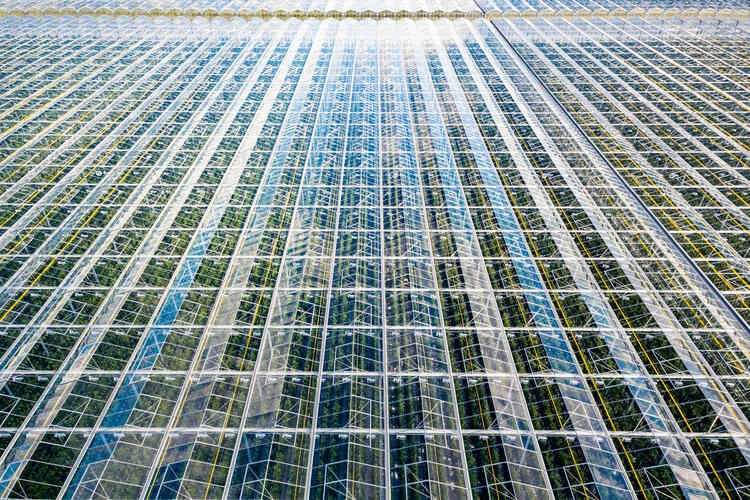
Despite the benefit of year-round fresh produce, the growing use of greenhouses worldwide may pose greater environmental issues than expected
By
The ubiquitous availability of fresh produce year-round is largely thanks to greenhouses. Traditionally concentrated in regions such as Spain, greenhouse cultivation is now expanding rapidly across the globe, a market projected to reach $66.86 billion by 2029.
A recent study from the University of Copenhagen, employing advanced satellite imagery and data analysis, has unveiled the staggering scale of this phenomenon, revealing a global greenhouse footprint of at least 1.3 million hectares. China, in particular, dominates the landscape, accounting for more than 60 per cent of the total area (Spain, the country with the second-largest share of greenhouse coverage, accounts for just over five per cent).
‘The boom in China seems to be closely linked to its strong economic performance over the past decade and the rise of an urban population with purchasing power that demands fresh fruit and vegetables,’ says Xiaoye Tong, who led the research. Government subsidies have also helped farmers expand into greenhouse cultivation, which has the potential to address food security challenges in many parts of the world.
One of Spain’s largest greenhouse hubs is in the southeastern province of Almería – covering an estimated 40,000 hectares of land – produces between 2.5 and 3.5 million tons of fruits and vegetables annually. These greenhouses are a major source of tomatoes, peppers, cucumbers and melons for consumption across Europe, and their use has grown rapidly since the 1950s thanks to innovations such as artificial soil and drip irrigation – a method by which water is slowly fed to plant roots via emitters placed in the ground.
What are the effects of using greenhouses?
While greenhouses offer advantages in terms of yield, efficiency and pest control, they also pose significant environmental and social risks. Overexploitation of water resources, pollution and potential labour abuses are among the main concerns, according to the researchers.
One study found the presence of microplastic pollution in greenhouse soil, believed to be from the intensive use of plastic film (used in greenhouse construction) and organic fertiliser. These microplastics can cause significant damage to ecosystems: their small size means they can seep easily into food chains and water supplies, harming species that consume them. The construction of greenhouses also involves using steel – the production of which significantly increases carbon emissions. For every ton of steel produced, around 1.83 tons of emissions are pumped out into the atmosphere.
Commercial greenhouses, while being presented as viable land-saving options for sustainable farming, are often powered by vast quantities of electricity for lighting – making up around 30 per cent of their total operating costs. To ensure that greenhouses don’t pose further environmental risk to the planet, lower-carbon power supplies must be used, instead of generating electricity via fossil fuels.
Already, high-tech greenhouses in the Netherlands are being developed to further revolutionise the traditional means of harvesting crops in greenhouses. By using a system that lifts rows of plants individually as people move between them – rather than the traditional method of planting in rows that are fixed in the ground – greenhouses can increase the quantity of plants by 20 per cent in the same space.
As the world’s population is projected to grow by up to 34 per cent in the next 30 years, meeting the demands for sustainable food production – of which greenhouses are a key part – is more important than ever. To fully harness the benefits of greenhouse agriculture while mitigating its drawbacks, comprehensive research and robust regulation are imperative.
‘In low- and middle-income countries, which account for 70–80 per cent of the total area, there is a lack of regulation in greenhouse cultivation,’ says Tong.




